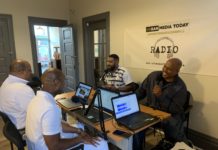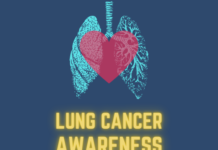Children from low-income communities tend to get diagnosed with autism later than those from wealthier communities. And Black and Hispanic children are less likely to have a diagnosis than white children. As a result, low-income and minority families are more likely to miss out on early interventions that can help an autistic child develop important skills.
To address these disparities, researchers developed an approach called ‘family navigation’ to help families overcome barriers to getting a diagnosis and accessing autism services. The intervention follows the basic principles of patient navigation, which was originally developed to reduce barriers to cancer care and help guide low-income people from screening to diagnosis and treatment.
The team trained community health workers, known as ‘navigators,’ to support families through the process of getting an autism diagnosis. The researchers then paired navigators with families of children flagged by a primary care clinician as possibly having autism.
The navigators are predominantly bilingual members of the same community as the families they are matched with, which helps bridge cultural and language barriers. “They have some cultural knowledge and understandings of the circumstances of the family’s lives,” says Emily Feinberg, associate professor of pediatrics at Boston University in Massachusetts, who led the work.
The navigators met with a family in person at least once to discuss potential obstacles and solve problems collaboratively. They were prepared to help a family think through how to get to an appointment for a diagnostic evaluation, tell the family what to expect at the clinic or explain the purpose of diagnosis, for example.
Following the initial meeting, a family could continue to interact with a navigator as needed. If a child was diagnosed with autism or another condition, the navigator assisted the family in getting access to recommended services.
Overcoming obstacles:
The researchers recruited 249 families of children aged 15 to 27 months from primary care practices in Boston, Massachusetts; Philadelphia, Pennsylvania; and New Haven, Connecticut. The group was ethnically and racially diverse, and about 82 percent of families had Medicaid, health coverage provided to low-income residents in the United States. Clinicians had identified the children as possibly having autism.
The team randomly selected 126 families and paired them with a navigator. The rest of the families, which made up a control group, got more conventional assistance: A ‘care manager,’ who was a staff member at the clinic or a member of the research team, called the family to make an introduction by phone, reminded them of their diagnostic evaluation appointment, provided resources and offered to answer questions. After the initial phone call, however, it was up to the family to contact the care manager if they had concerns.
Within one year, 86 percent of families paired with navigators had completed a diagnostic assessment, compared with 76 percent of control families, the researchers reported in January in JAMA Pediatrics. Among the 202 children who had a diagnostic assessment, 118 have autism and 84 have another developmental condition.
Families in some populations and cities especially benefited from the new approach. Those in Boston and New Haven who met with a navigator, for example, were twice as likely to complete a diagnostic assessment as control families. Hispanic families also benefited more from family navigation than non-Hispanic families, and it boosted the proportion of families who completed a diagnostic evaluation by 41 percent.
The findings suggest that the effects of family navigation depend on context, the researchers say. Although more research is needed to tease out what factors influence the approach’s effectiveness, it may be particularly important for families who face language or cultural barriers.
Family navigation could have a “huge benefit” for the most vulnerable families, Feinberg says, and she hopes to see the approach become part of routine care.
Story Credit: Chloe Williams











































